Fox Point Art Yard - Mary Nohl
Artist-built Environment | Sculpture environment | Private property - Visible from the street
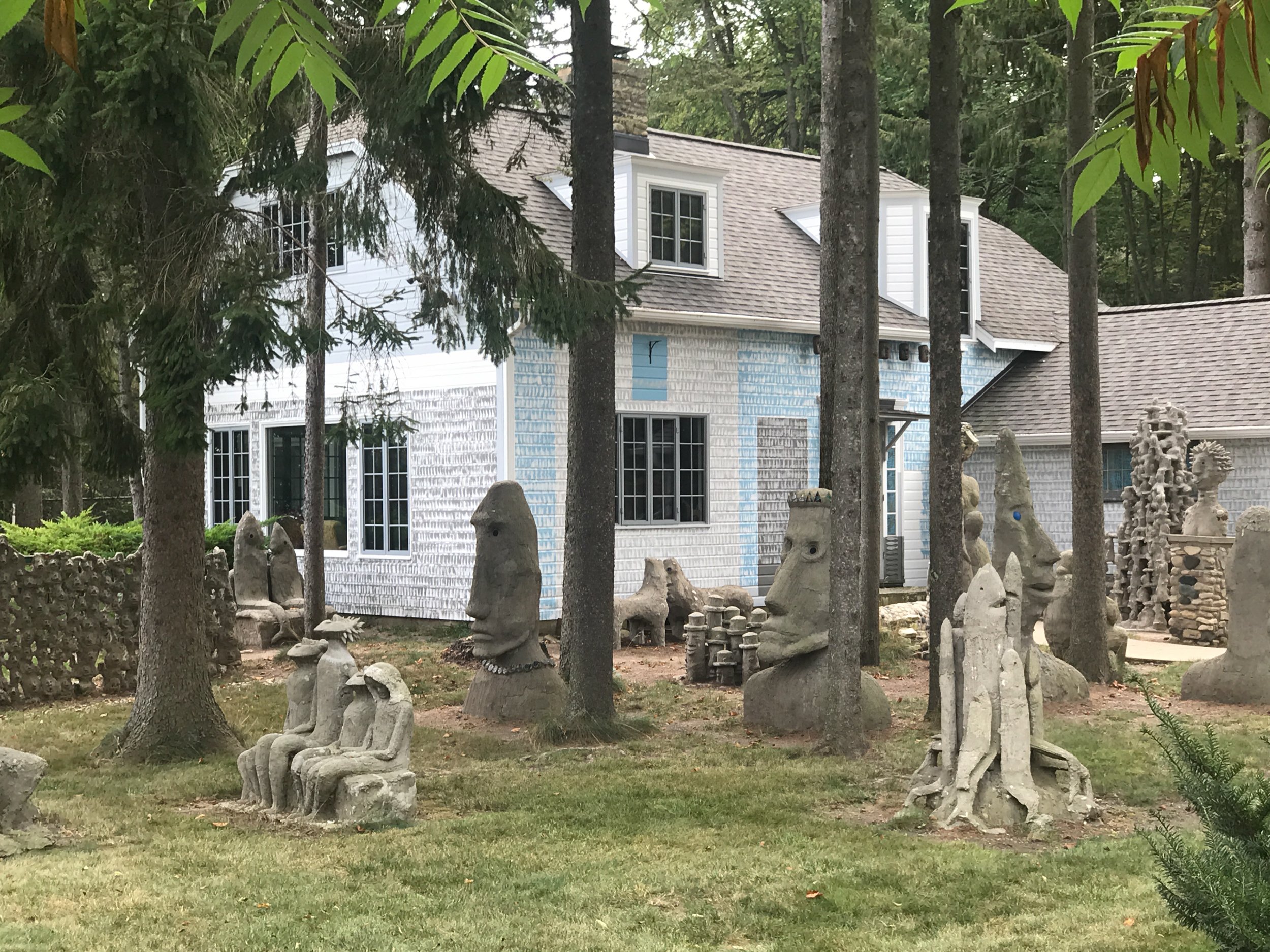
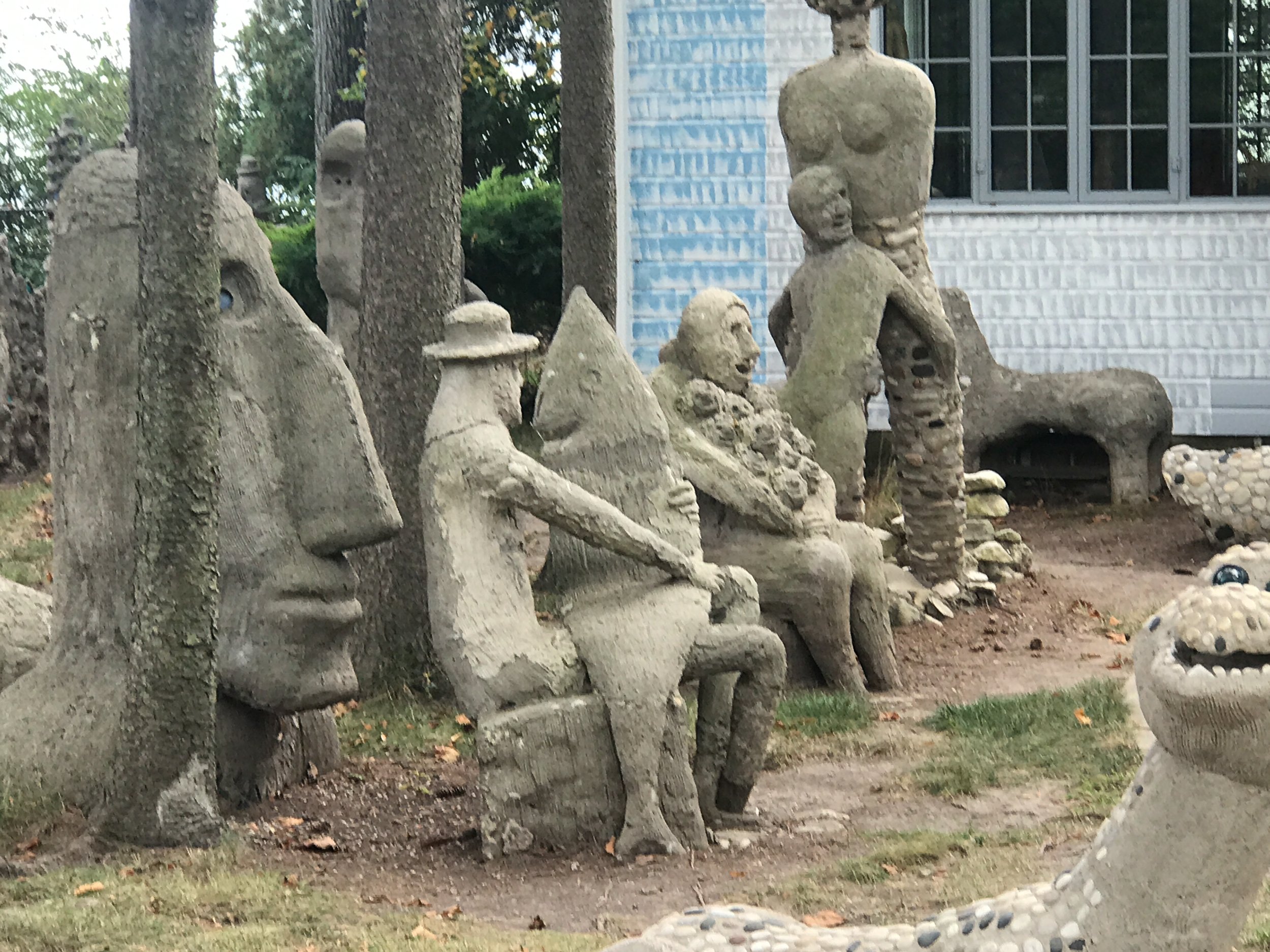
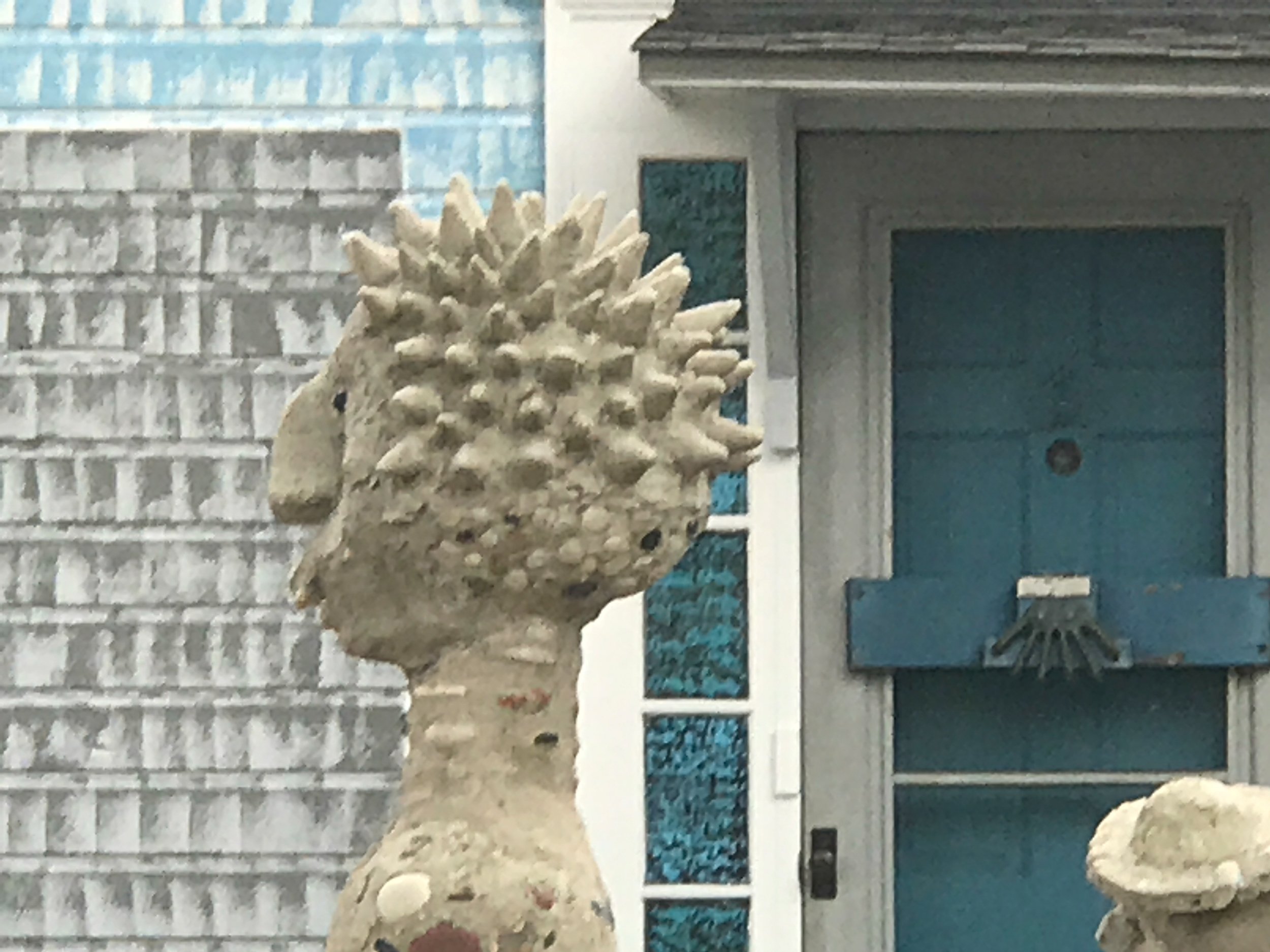
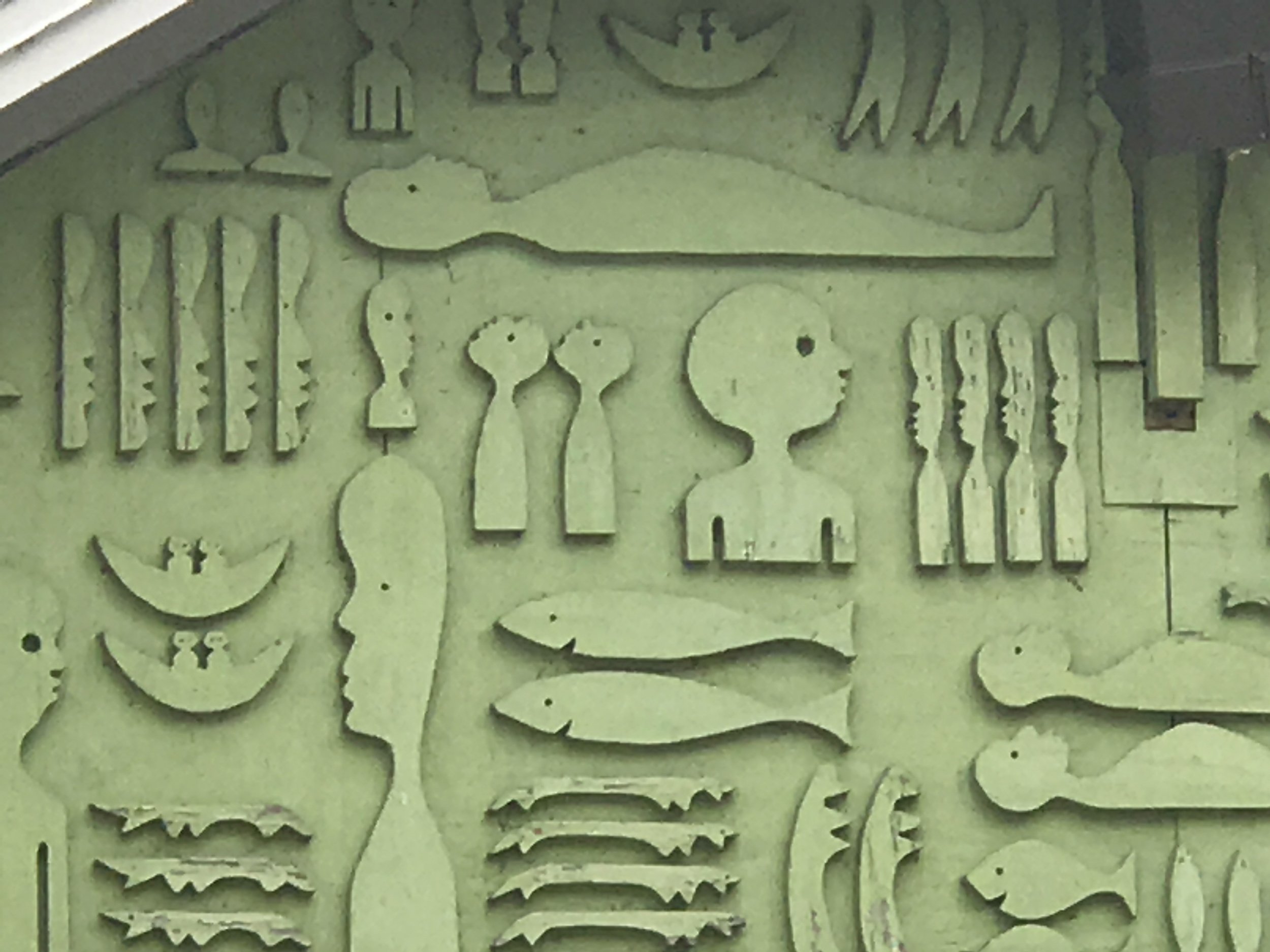
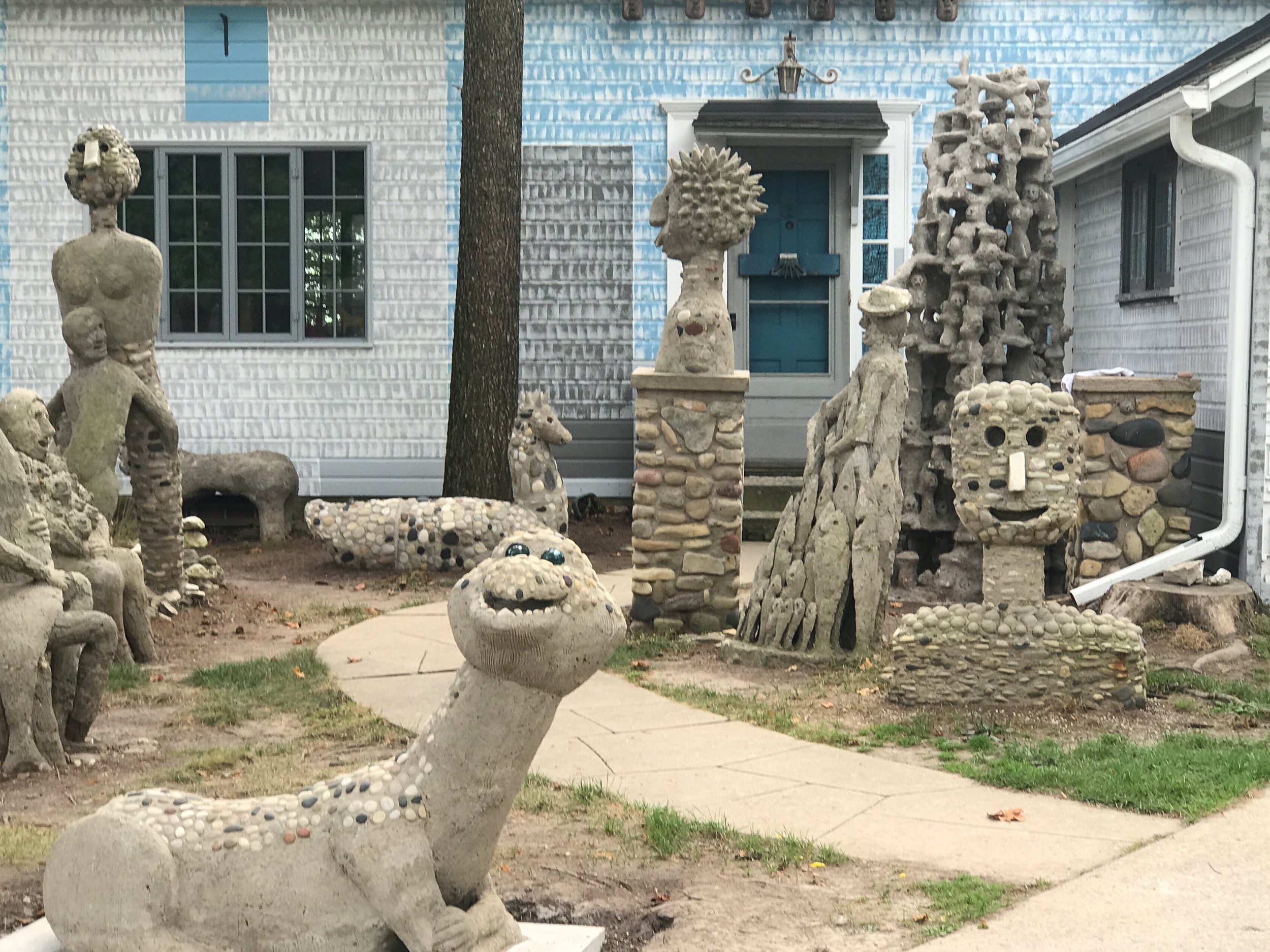
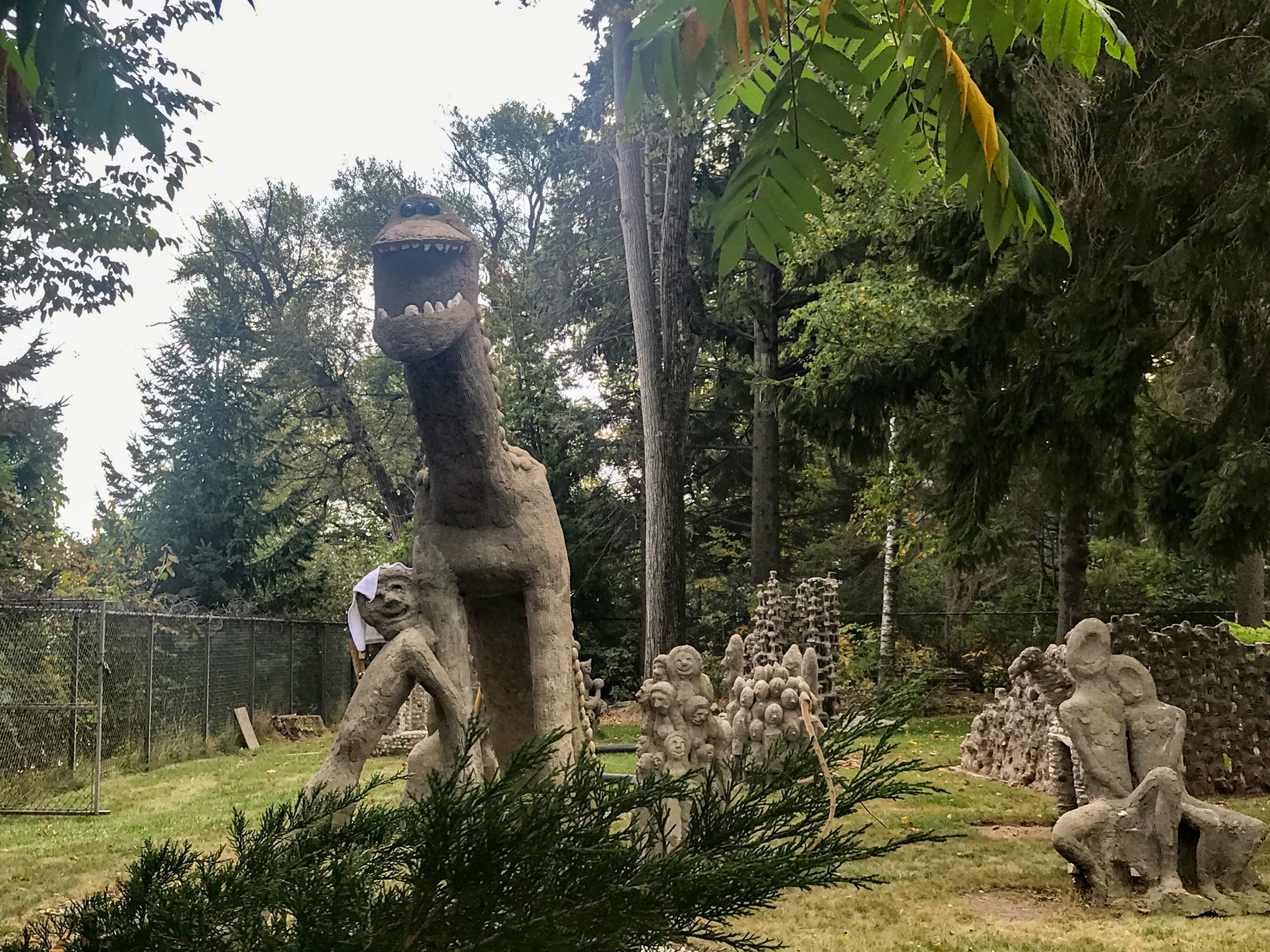
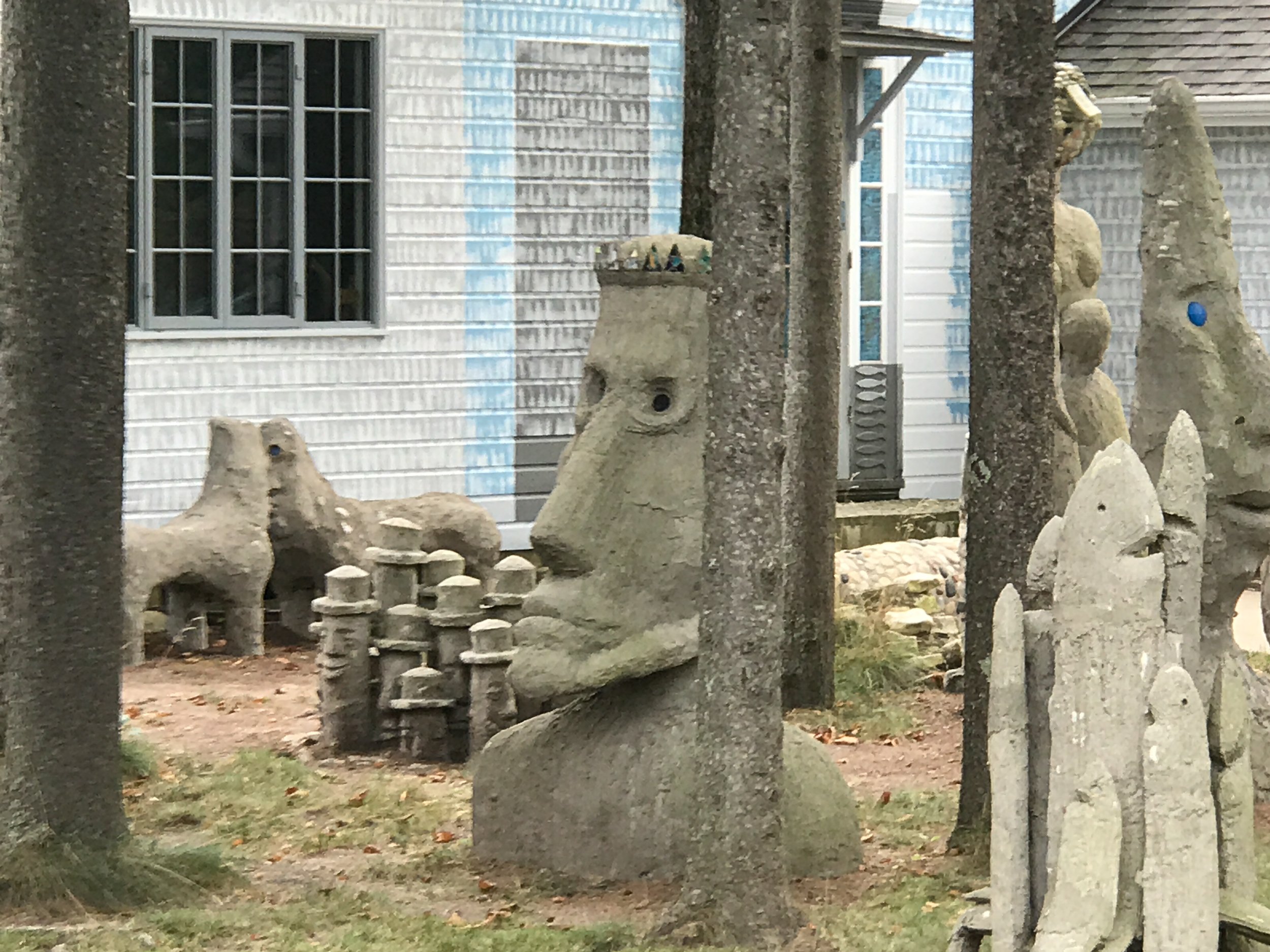
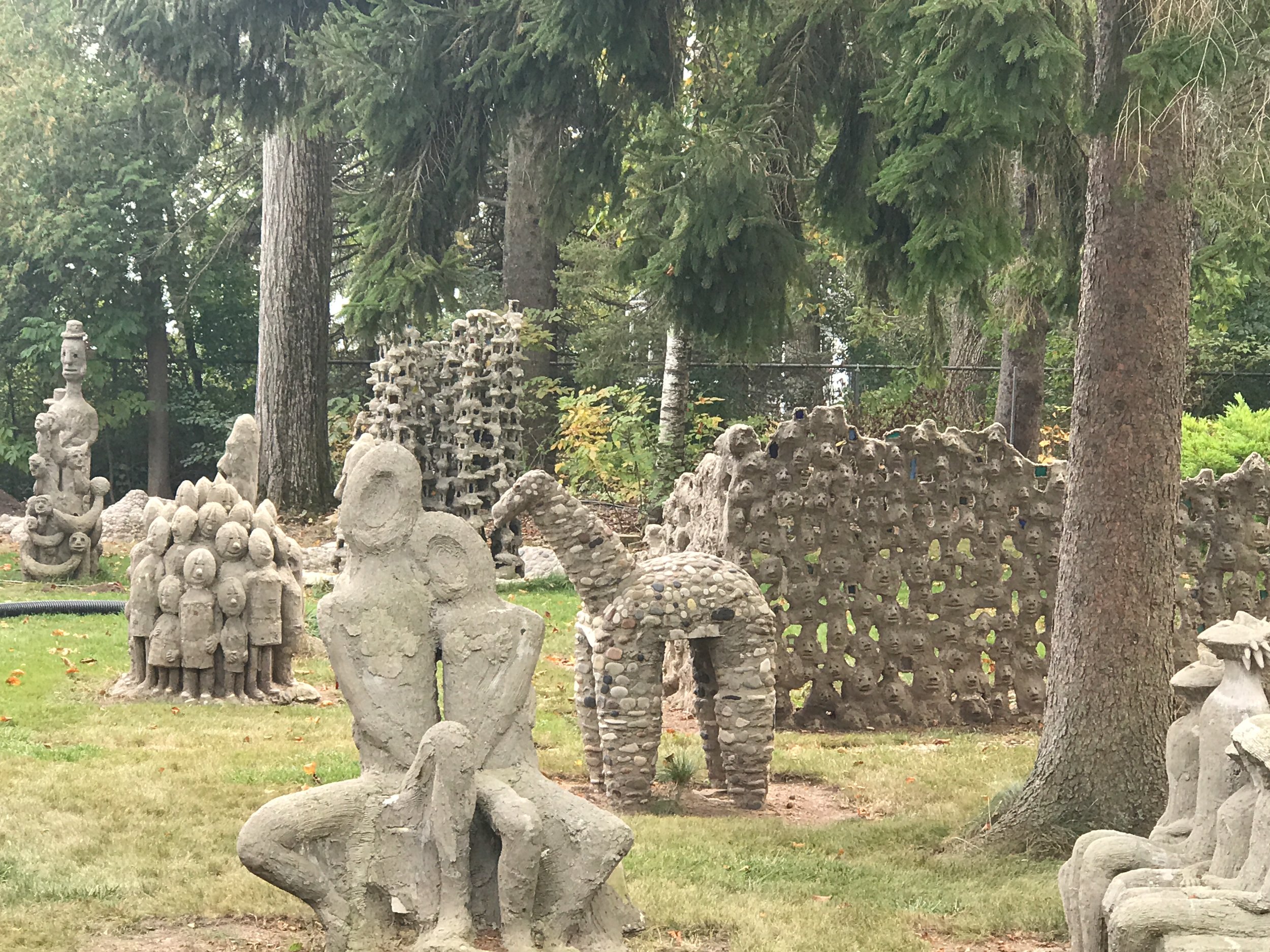
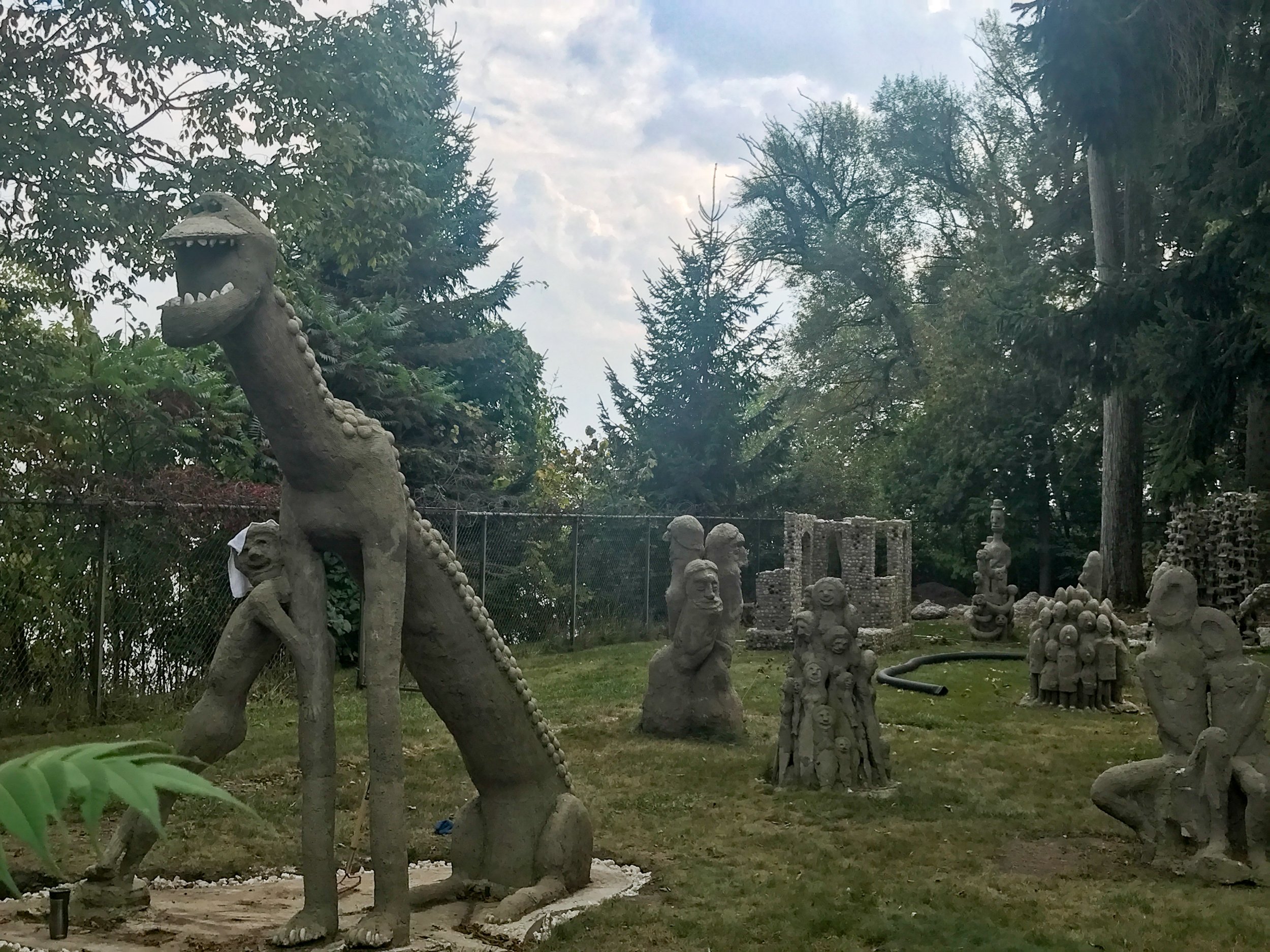
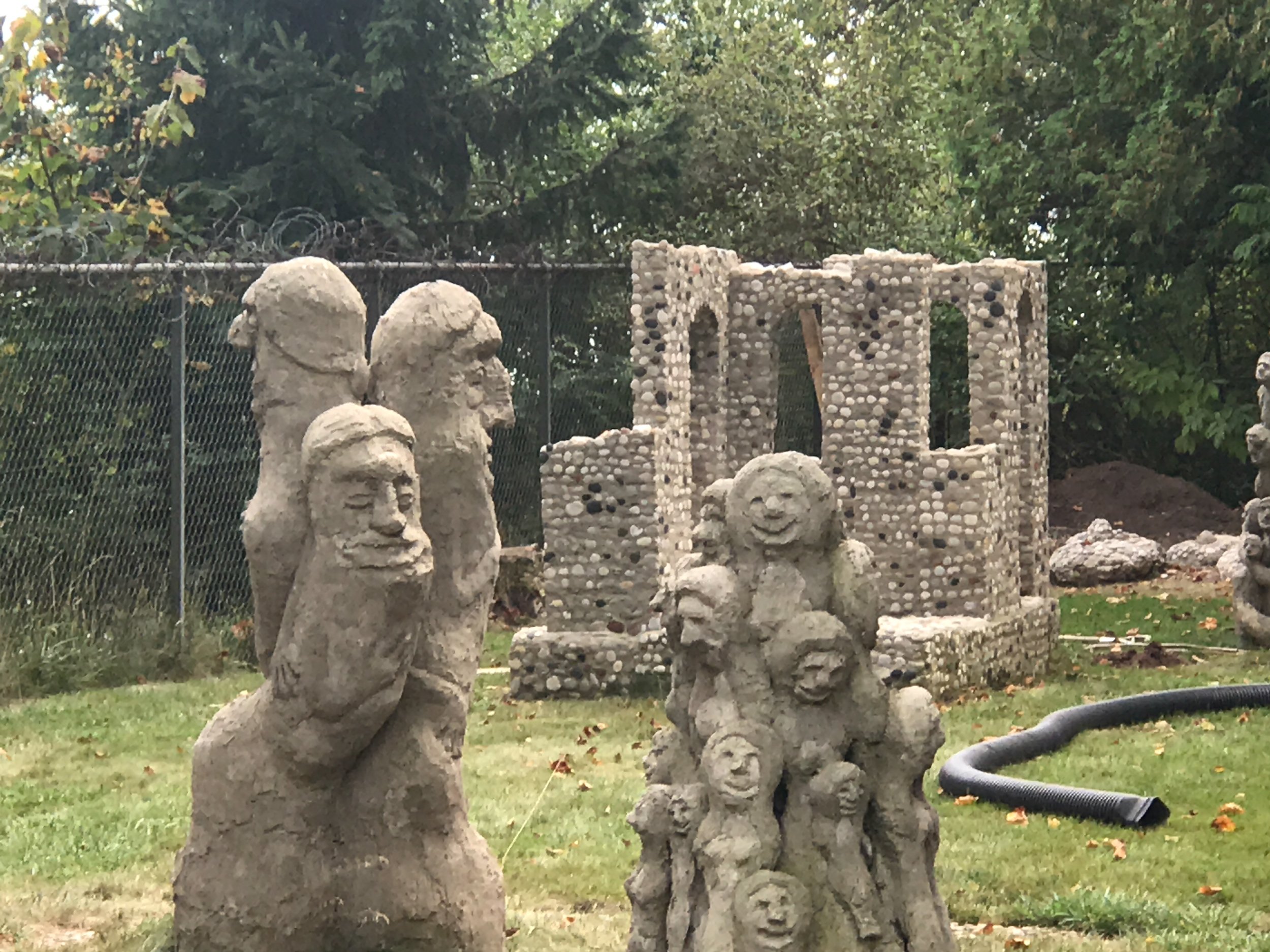
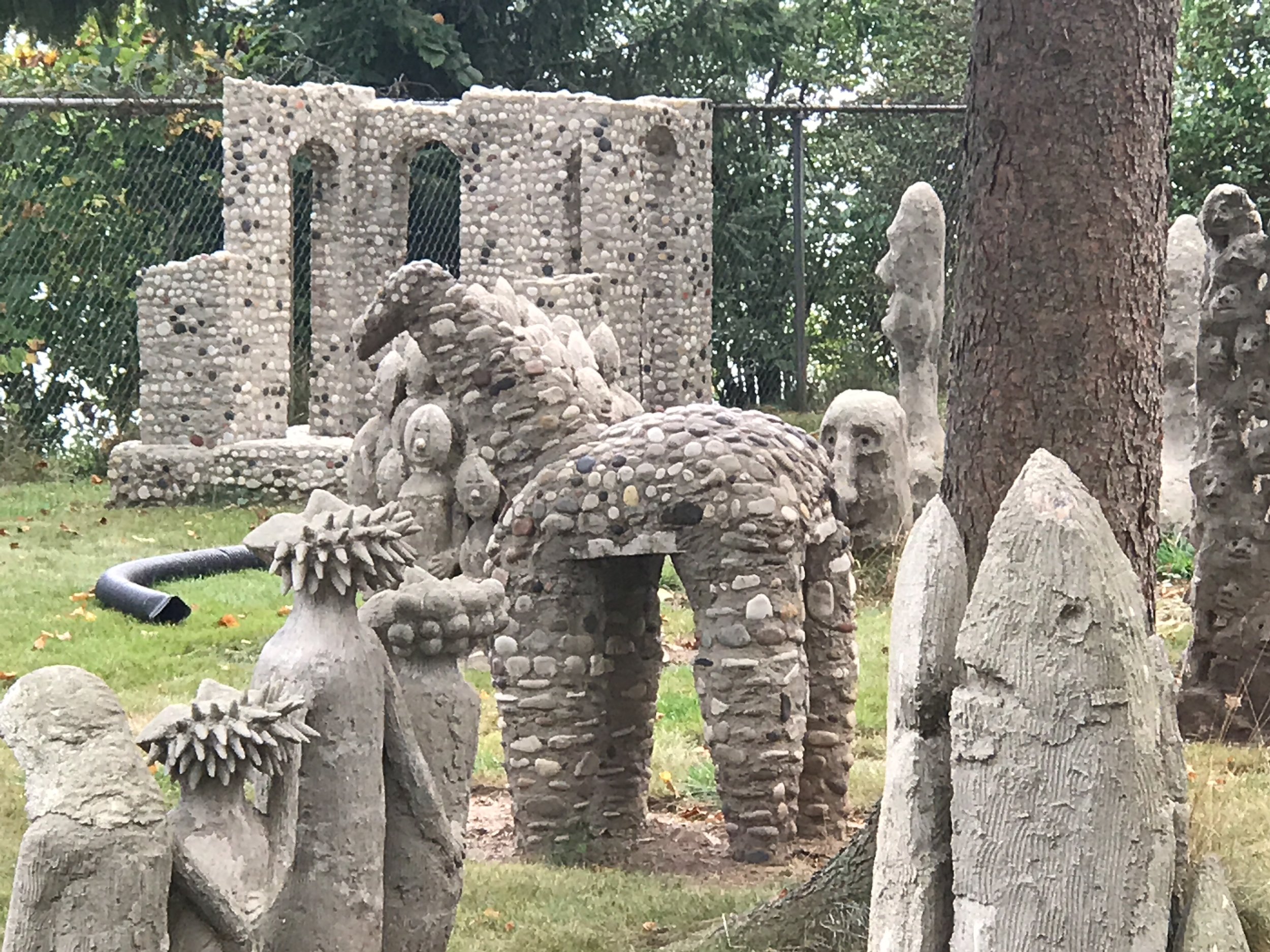
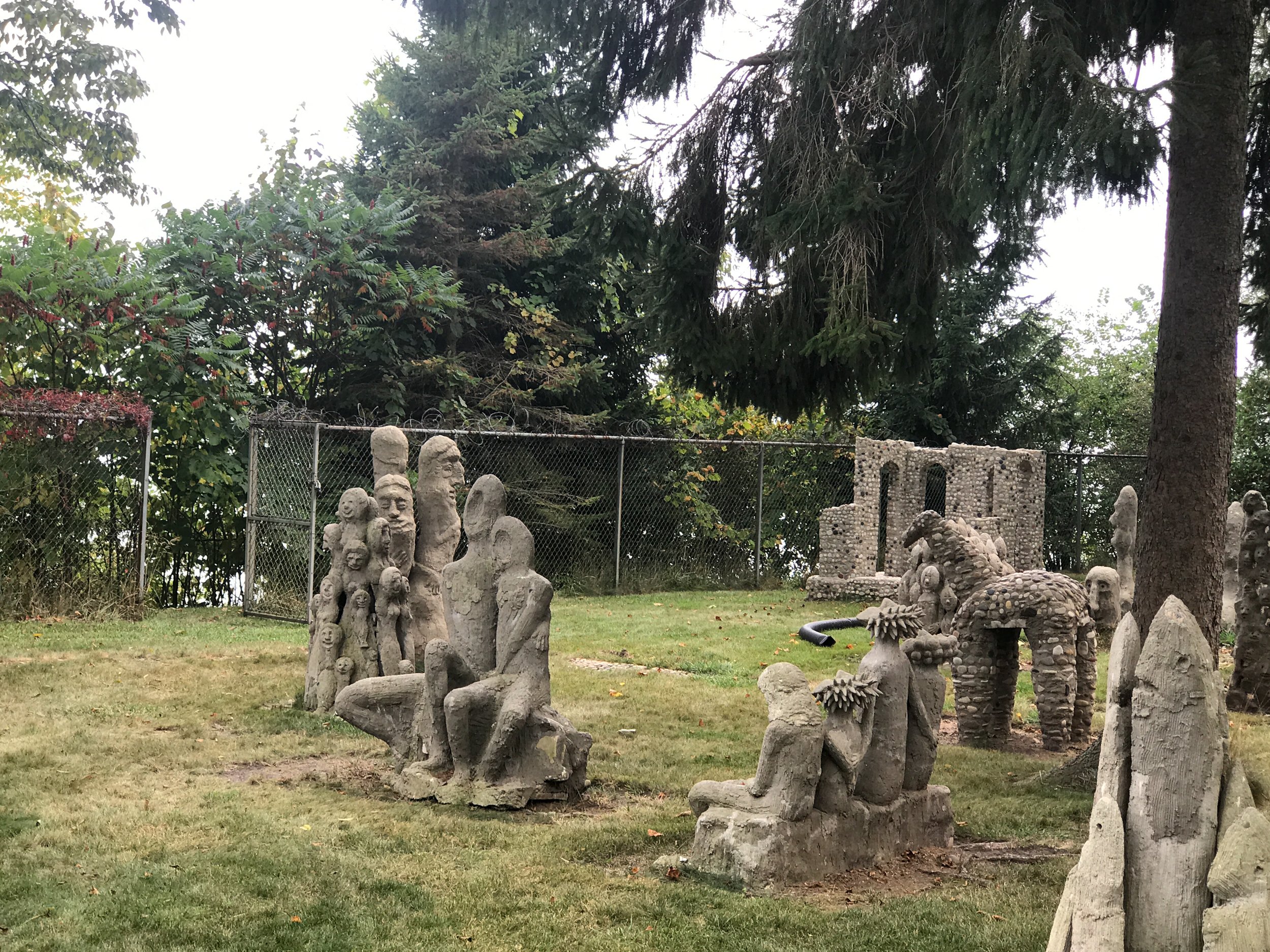
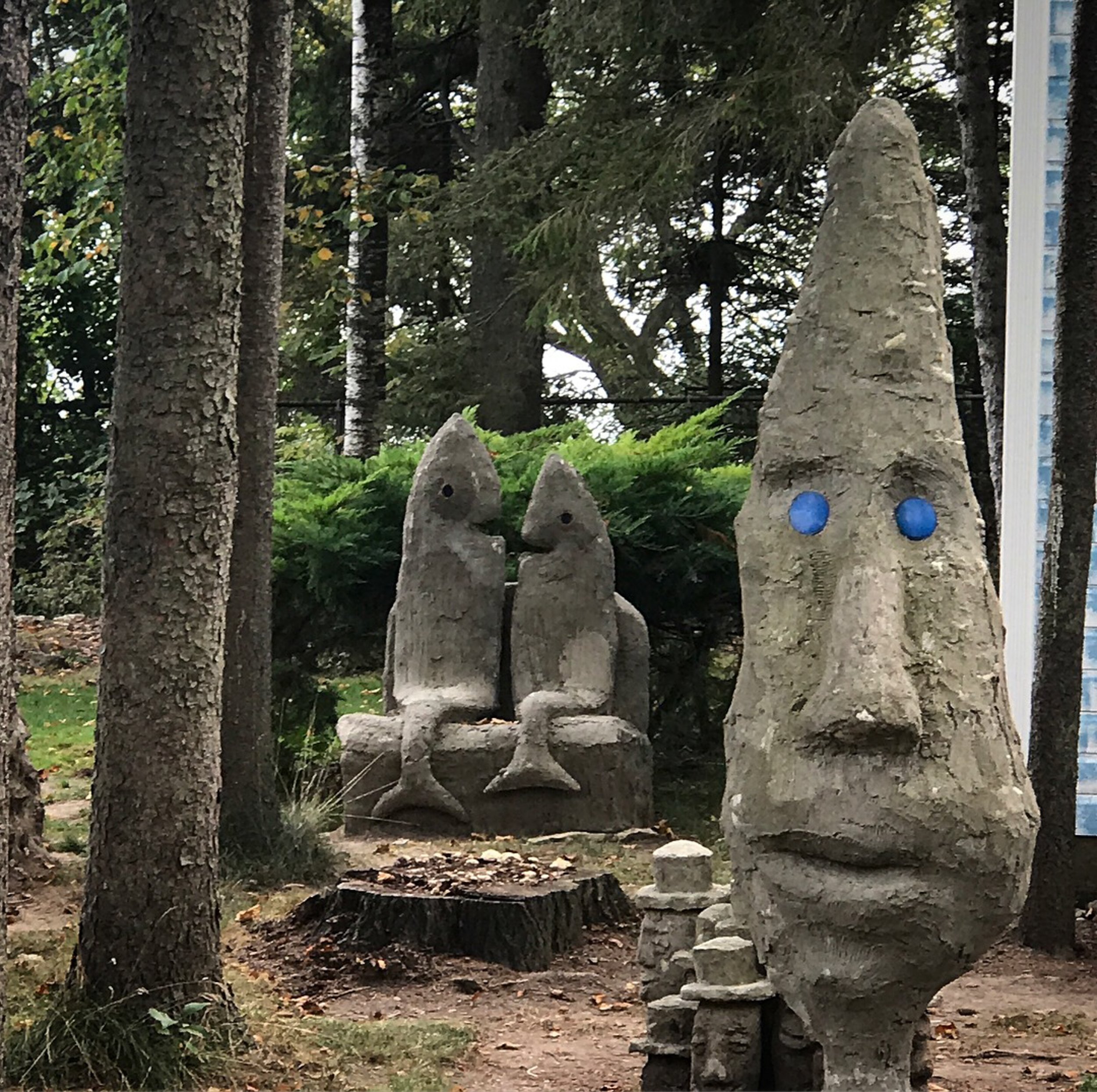
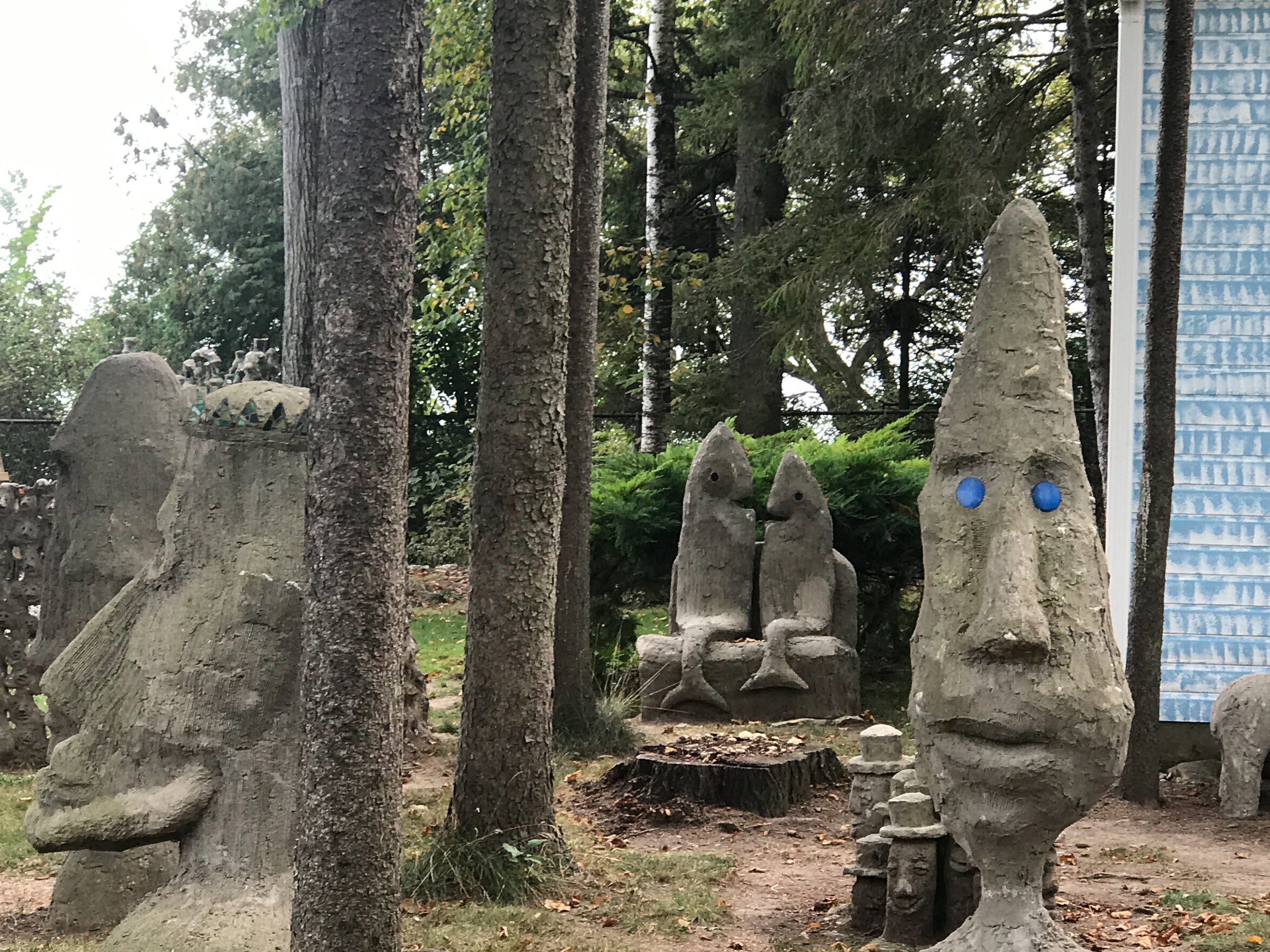
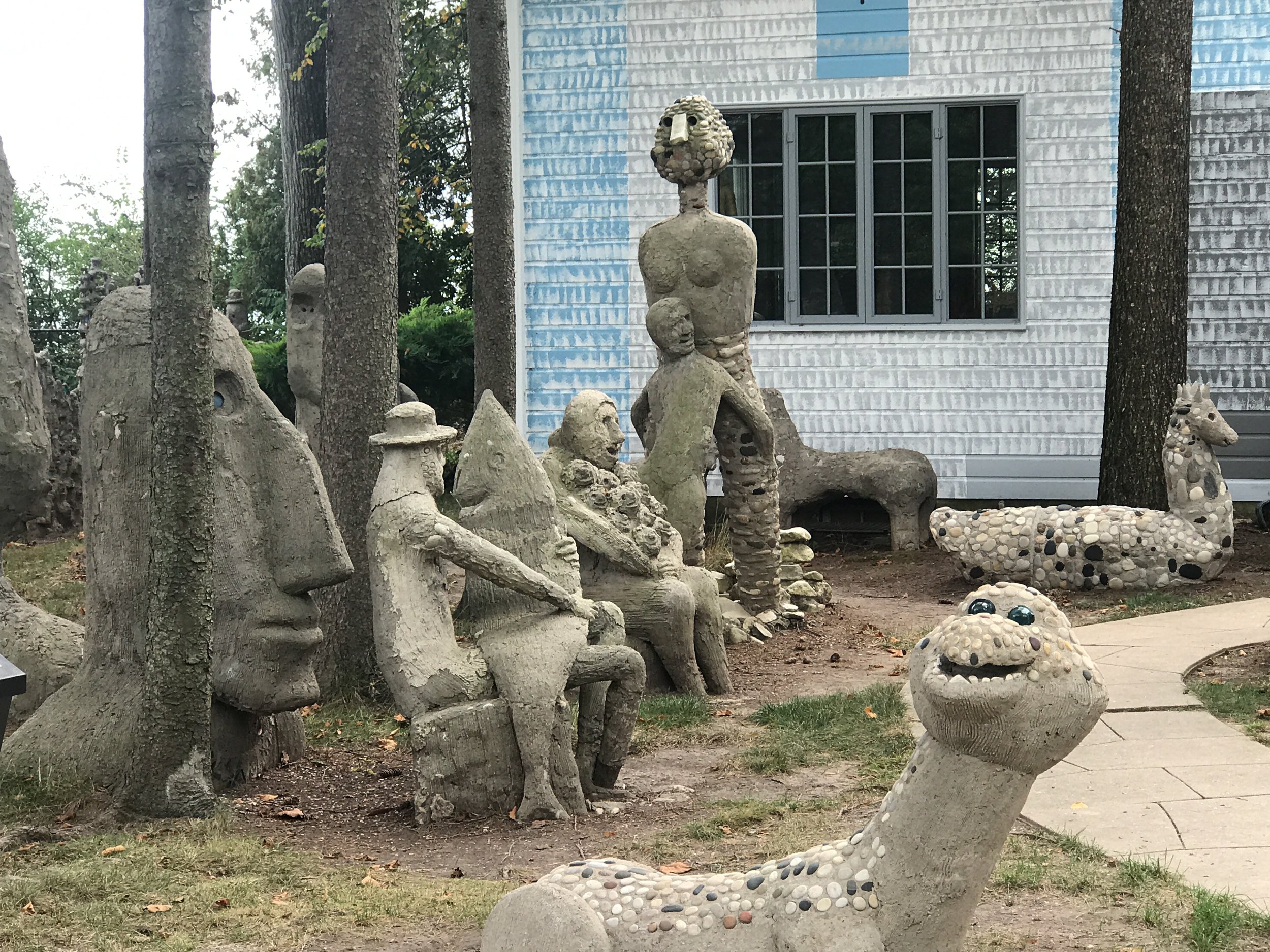
(Note: As of Jan 2023, the neighbors at Fox Point are trying to block access to the environment. Please respect the local laws.)
From the John Michael Kohler Art Center
Mary Nohl’s lakeside cottage and yard are replete with sculptures, paintings, and decorative elements. Inspired by her life on the shore of Lake Michigan, Nohl used every imaginable material to construct a colorful and whimsical world. The yard features fifty-nine concrete sculptures, many figural and life-size. Inside the house, almost every surface is adorned; she hand made stained glass, painted her furniture and walls using carpet swatches as brushes, and displayed her paintings and ceramics. In addition to her environment, Nohl was a prolific artist: jewelry; sculptures in resin, wood, aluminum foil and metal; puppets; paintings; and pottery. There are now over thirty-five hundred Nohl works of various media in the Arts Center collection, in addition to the home itself and an abundance of archival material.
Mary Nohl was born in 1914 in Milwaukee, Wisconsin, the daughter of a prominent lawyer and a mother with musical interests. After college at the School of the Art Institute of Chicago, she taught art in the Baltimore public school system for two years before returning to Milwaukee to teach. When her parents took up full-time residence at their cottage on the shore of Lake Michigan in Fox Point, Wisconsin, she joined them and devoted herself to art making.
Nohl’s interests were diverse, deeply inspired by the watery realm outside her back door and by her travels all over the world. She refused to be confined by artistic categorization and was omnivorous in her selection of materials and methods of making. In addition to operating a commercial pottery studio for a decade, she was a painter, sculptor, printmaker, woodcarver, writer, illustrator, cartoonist, and jeweler—yet she described herself as simply “a woman who likes tools.” After her parents died, she began to alter the lake house and property, embellishing most of the surfaces inside and out and filling the yard with her large sculptural creations.
After Nohl’s death in 2001, Kohler Foundation, Inc., took on stewardship of her life’s work. In 2005 the Mary Nohl home was listed on the National Register of Historic Places, and it was named a Milwaukee County Landmark in 2006. In 2012 the John Michael Kohler Arts Center received the property and the individual artworks from the foundation.
Excerpted text from hyperalleric
http://hyperallergic.com/168575/a-single-woman-is-a-witch-battling-to-save-the-art-environment-of-mary-nohl/
Once her father died and her mother entered a nursing home, Nohl had full run of the house. From the 1960s until her death in 2001 at age 87, Nohl transformed the place into an expansive work of art that was inspired by her childhood roots in this charmed setting. She mixed concrete from sand and stones from the beach to create the many yard sculptures. She cut out wooden reliefs of swimmers and boaters to attach in patterns on the house. Wind chimes hung in the trees, translating the significant breezes into aural compositions. Nohl used what was on hand for her artwork, being both resourceful and inspired by the process of making something from the land. All of her endeavors, be they jewelry making and painting during the winter months or yard work in the summers, emanated from the inspiration of this particular site.
Nohl worked in an interdisciplinary manner (before the term was coined), and yet her diverse output connects thematically. Floating figures, fish, and men with top hats drift from silver jewelry compositions into paintings and yard sculptures. Everything inside and outside the home, from the stippled ceilings to the drip-painted chairs, is joyously embellished with designs that suggest the diverse resources of her education as well as her frequent travels: Hans Arp, Surrealism, the cross-cultural theory laid out by professor Helen Gardner. Kitchen compositions made of chicken bones, woven jute figures, faux stained glass windows, carved wooden totems, abstract collages, assemblages, pen drawings, clay figures, and oil paintings re-envision the traditional concept of ‘home’ as a place of infinite creative potential — a place where personal history has solid authorship.
From the time she built the first concrete sculptures, stories began circulating about the curious person responsible. By the 1960s, most of the property along this private enclave of beach had been subdivided into acre lots, expensive suburban homes replacing the original quaint cottages of Nohl’s generation. In sharp contrast to this newly conceived American dream, wherein a surging economy allowed women to stay home, have children, and be ideal housewives, Nohl lived alone at the end of Beach Drive. Most of her neighbors mowed their giant lawns every Sunday in a shared ritual of conformity, a nod to man’s mastery of nature. In contrast, Nohl wove the sky, lake, beach, wind, and her childhood memories of unfettered play into a self-styled art environment.
Over four decades, Mary Nohl kept making and building. Stories took hold, about how she’d murdered her family and buried them under the sculptures, or how her husband had been lost in the lake and the sculptures were to beckon him home. All the stories inserted the “missing” husband and children. The cottage became a frequent late-night stop for teens drawn to the counterculture strangeness of the place. Others came and left notes of gratitude in her mailbox.
In the world, there are very few preserved art environments built by women. Two other significant sites are Grandma Prisbrey’s Bottle Village in Simi Valley, California, and Helen Martin’s Owl House in South Africa (which had the benefit of Athol Fugard writing a play about it, The Road to Mecca). Nohl and these two female builders owned their own land, which is not an insignificant detail. Land ownership confers independence and power. Women are still often denied this gentry status. It’s probably the single reason why there aren’t more art environments built by women.
Nohl never believed that art existed in a separate sphere, corralled into museums, labeled with text or swept into the marketplace of privilege. On Beach Drive, she created a place where any passerby might stop, marvel, and feel a little freer, especially if you are a woman. The power of Nohl’s lifelong endeavor emanates from its site and her personal history there. They might as well burn the witch’s house down, because turning it into a facsimile museum in another county would destroy what makes it monumental — power, authority and difference arising from a single woman who was determined to live inquisitively.
Creator: Mary Nohl: 1914-2001
Creation date: 1950s-2001
7328 N Beach Dr
Fox Point, WI
-
Books:
The World of Mary Nohl by Sarah Fayen Scarlett (2020)
Mary Nohl: The Poet and the Angel by Ann Angel (2019)
Mary Nohl: A Strange and Curious Place by Leslie Umberger (2018)
Mary Nohl: Inside & Out by Adam Carr (2018)
Mary Nohl: A Lifetime in Art by Andrea Avery (2015)
The Art of Mary Nohl: Inside & Outside by Barbara Manger and Janine Smith (2012)
Mary Nohl: A Lifetime in Art by Barbara Manger and Janine Smith (2003)
Mary Nohl: A Very Special Artist by Gretchen Schulz and Barbara Manger (1998)
Sellen, Betty-Carol and Cynthia J. Johnson, 20th Century American Folk, Self Taught, and Outsider Art. New York, NY, Neal-Schuman Publishers, 1993.
Manley, Roger and Mark Sloan, Self-Made Worlds: Visionary Environments. New York, Aperture, 1997.
Von Schaewen, Deidi and John Maizels, Fantasy Worlds. New York, Taschen, 1999.
Sellen, Betty-Carol and Cynthia J. Johnson, Self Taught, Outsider, and Folk Art—A guide to American Artists, Locations and Resources. Jefferson, NC, McFarland & Company, 2000.
Laffal, Florence and Julius Laffal, American Self-Taught Art: An Illustrated Analysis of 20th Century Artists and Trends with 1,319 Capsule Biographies. Jefferson, NC, McFarland & Company, 2003.
Umberger, Leslie, Erika Doss, Ruth DeYoung Kohler, Lisa Stone, and Jane Bianco, Sublime Spaces & Visionary Worlds: Built Environments of Vernacular Artists. John Michael Kohler Arts Center and Princeton Architectural Press, 2007.
Magazine Articles:
Raw Vision Magazine: "Mary Nohl of North Beach Drive"
"A Singular Sensation" by Janet Zweig, Wisconsin Trails, May/June 2009
"Mary Nohl: Outsider Artist Extraordinaire" by Judith Ann Moriarty, Wisconsin Gazette, October 30, 2014
"Outsider artist Mary Nohl's Wisconsin home and garden are preserved as she left them" by Mary Carole McCauley, Baltimore Sun, August 25, 2018
Websites:
Mary Nohl Art Environment, John Michael Kohler Arts Center, https://www.jmkac.org/exhibition/mary-nohl-art-environment.html
Mary Nohl: The Witch of Fox Point, Milwaukee Magazine, https://www.milwaukeemag.com/Mary-Nohl-The-Witch-of-Fox-Point/
Mary Nohl House, Wisconsin Historical Society, https://www.wisconsinhistory.org/Records/NationalRegister/NR2430
Mary Nohl, Artsy, https://www.artsy.net/artist/mary-nohl
Mary Nohl Art Environment, Wisconsin Historical Society, https://www.wisconsinhistory.org/Records/Article/CS5377
"Mary Nohl's Home" by Nicholas Frank, Art in America (2015), https://www.artinamericamagazine.com/news-features/magazine/mary-nohls-home/
"Mary Nohl: A Sculptor's Vision" by Linda Endlich, Wisconsin Trails (2011), https://www.wisconsintrails.com/arts-culture/mary-nohl-a-sculptors-vision/article_15744992-9527-11e0-9e25-001cc4c03286.html
"Mary Nohl: The Witch of Fox Point" by Ryan Schleicher, Milwaukee Magazine (2017), https://www.milwaukeemag.com/mary-nohl-witch-fox-point/
"Mary Nohl's Garden of Sculptures" by Dave Hoekstra, Chicago Tribune (2014), https://www.chicagotribune.com/news/ct-xpm-2014-08-20-ct-mary-nohl-garden-of-sculptures-20140820-story.html
"The Eccentric Artist Who Lived in a House of Art on the Shore of Lake Michigan" by Gary D'Amato, Milwaukee Journal Sentinel (2019), https://www.jsonline.com/story/sports/columnists/gary-damato/2019/07/30/mary-nohl-wisconsin-artist-who-lived-house-art-dies-86/1853681001/
"Mary Nohl's Art Environment" by John Riepenhoff, The Archive of Wisconsin Art (2012), https://wisconsinart.org/archives/essay/mary-nohls-art-environment.aspx Description text goes here